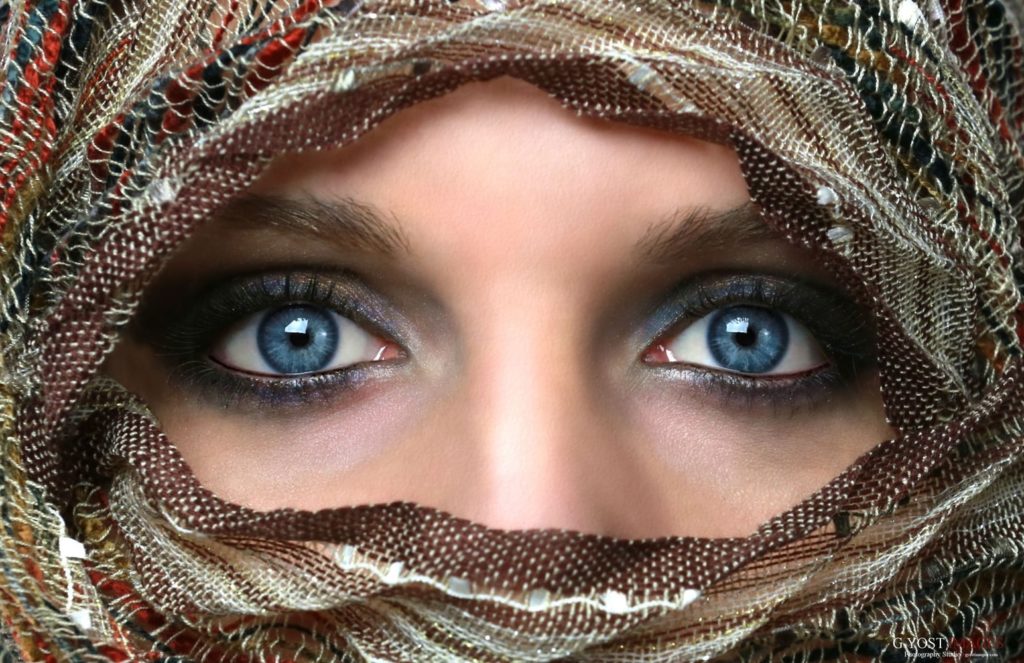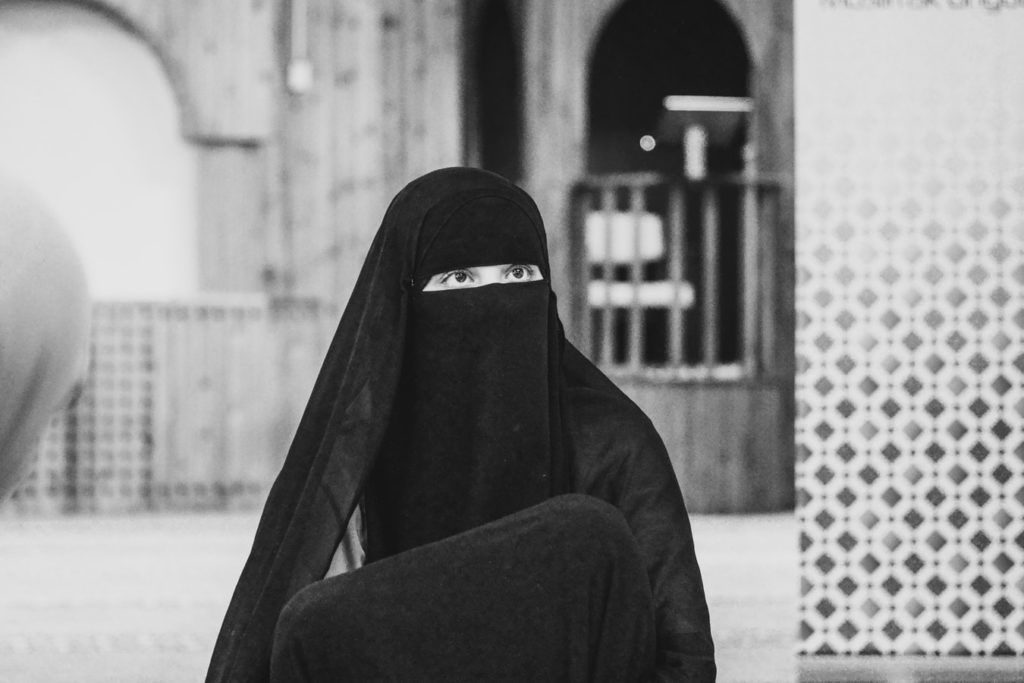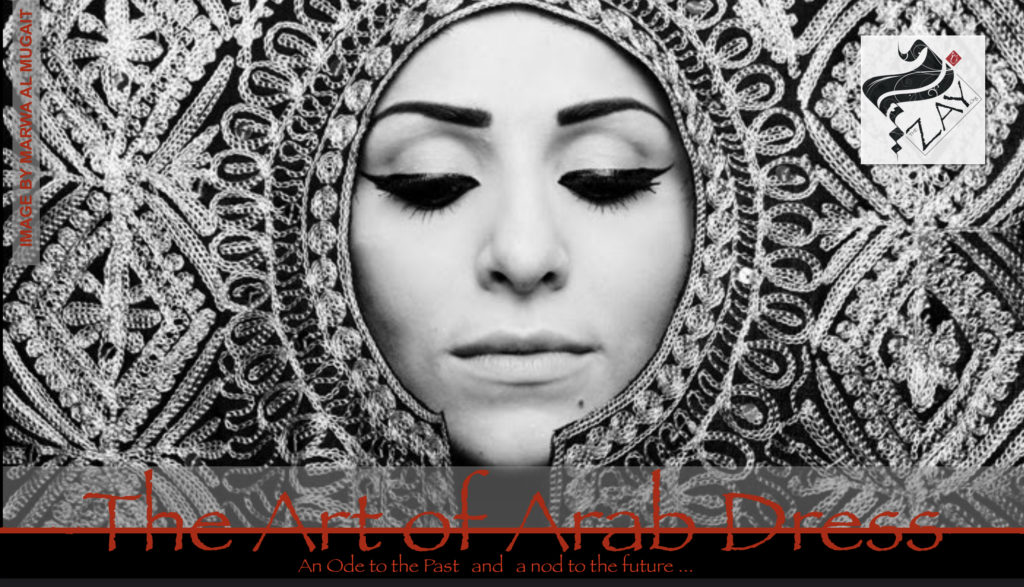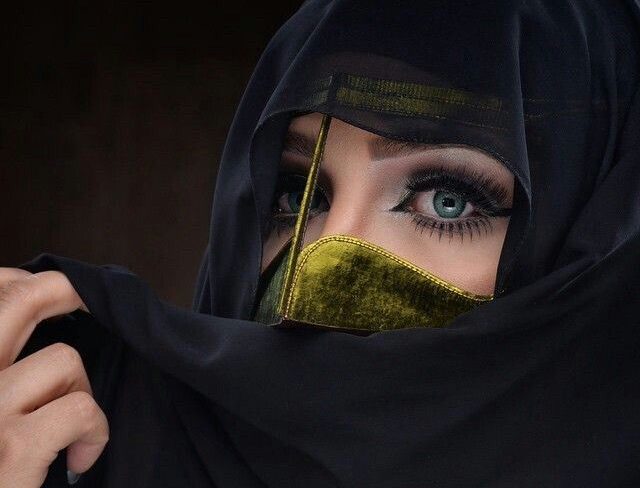Arab Dresses and Veils: An Introduction to the Arab Fashion
Many people unfamiliar with the Arab culture, think that hijab and abaya are the only traditional Arabic garments women wear. Contrary to popular opinion, different Arab nations and different regions have their own preferred dress and headscarf types. The versatility of Arab dresses is often the source of confusion. In this blog post, we’ll highlight some elements of the traditional Arab garments, worn in different parts of the Arabic world.

Abaya
Abaya (meaning cloth in Arabic), is a piece of loose over-garment that’s worn in the Arabian Peninsula, North Africa and the Middle East. The garment resembles a wide robe and is meant to cover up the body of a wearer and protect it from sight. In the Islamic world, Abaya is worn by men and women alike. It covers the entire body, apart from feet, hands and the head of a person. Traditionally, the abaya is usually black, decorated with embroidery. In certain countries, lighter colours are preferred, particularly earth tones. Since abaya is an over-garment, underneath women can wear any clothes whatsoever, including the popular fashion designer’s outfits.
Check our upcoming events selected for you:
Speaking of popular fashion designers, some high-class fashion labels have specialised in making designer abayas including John Galliano and Blumarine. Just like other types of Islamic garments, abaya has also suffered changes over time. For example, in the 1990s the style that has fitted sleeves, become popular since it allowed bigger freedom of movement. The umaniyah style inspired by a tunica worm in Oman, featuring a cross-over front fastening, also represents a modern twist on a traditional Arab outfit.

Jilbab or Chador
Jilbab is another type of clothes worn by Arabic women. It is a loose-fit outfit, resembling a long dress or tunic. The outfit is sometimes called a chador particularly in Iran and Afghanistan. It covers the entire body starting from the head downwards, it is usually tucked in below the armpits and has no openings for hands. The Islamic attire is closed at the neck by pin or by hand. Traditionally, chadors are usually plain black or blue with subtle decorations, but nowadays you can also see chadors made from colourful fabrics with bold, attention-grabbing patterns.
Hijab
Most commonly the word hijab is used to describe a veil worn by Arab women which covers the hair while the face is revealed. Hijabs come in many shapes and sizes. The al-amira, for example, is a type of two-piece hijab. It is characterized by a close-fitting cotton or polyester cap, accompanied by a tube-like scarf falling down the wearer’s neck. The veil is often embellished with embroidery around the edges. Khimar is longer than a usual hijab and covers the body till the waist. It covers the hair, neck, chest, and shoulders while leaving the face uncovered.
More often than not women choose a hijab that matches the style of the abaya. More conservative women wear hijabs in colours such as black and blue while more fashion-forward women choose brighter colours or bold prints. Certain fashion designers make luxury hijabs from silk, chiffon and other fabrics featuring their recognizable logos.
Younger Arab women, like to accessorize the hijab, for example, with baseball hats, beanies, earrings and other jewellery. Some use glued add-ons, rhinestones or ravishing embroidery. A lot of women employ different folding, wrapping and pinning techniques, to diversify their appearance. Adding different accessories, sparkles and textures to the hijab allows the wearer to stand out and express her personal style.

Niqab
Often worn with an abaya, a niqab is a veil that covers the whole face and leaves only a narrow slid around the eyes. The origin of the name comes from the word baqarah meaning “to split openâ€. Arab women also wear half-niqabs that reveal half of a nose alongside the eyes, and a part of a women’s forehead. A niqab is usually composed of a double layer black gauze or cloth, with upper and lower sections attached around the eyes. The niqab usually spans just below the neck although sometimes it can extend down to the women’s chest.
Although traditionally, niqabs come in black and blue without any accessories, in modern days, niqabs are made from various fabrics, featuring various types of decorations. For example, some niqabs feature famous logos and patterns such as Louis Vuitton recognizable logo. Other times, decorative embroidery and iron-on embellishments have been introduced to highlight areas such as the eye-opening, the chin line, or the lower edge of the fabric.
Burqa
A burqa is a type of attire that completely covers the face and the body of a wearer. The area around the eyes is usually covered in a thin mash allowing the person to see through it. In the desert areas, the mash protects the woman’s eyes from sand and dust. Burqas can come in all colours, light and dark, but light blue, black, and white are the most popular.
The Art of Arab Dress
Arabic garments are more than a fashion statement, they are a way of expressing the cultural identity and cultural heritage of different Arab nations. With a large versatility of fits, colours and types of embellishments, the Arab dress is an art piece in its own right.
Unfortunately, there are a lot of myths and misconceptions about Arab women traditional garments. Here to debunk these misconceptions is Dr Reem El Mutwalli, the founder of The Zay Initiative. Join her in an hour-long online lecture, The Art of Arab Dress, where she will discuss, the role of Arab dress, the major varieties of clothes in different Arabic regions, and answer questions.
Join our talk on ‘The Art of Arab Dress’
Register online today! -> RSVP



Leave a Reply